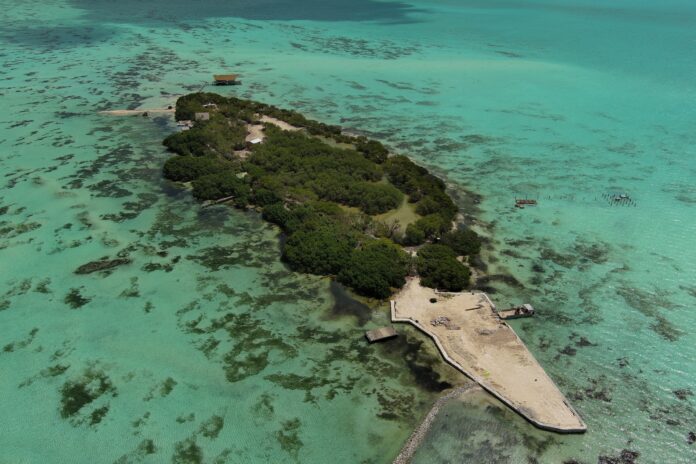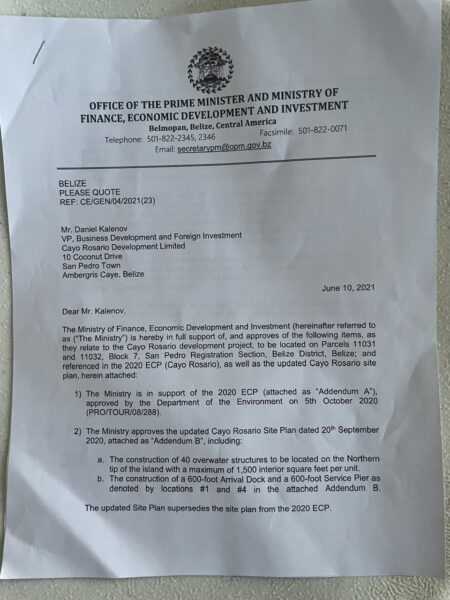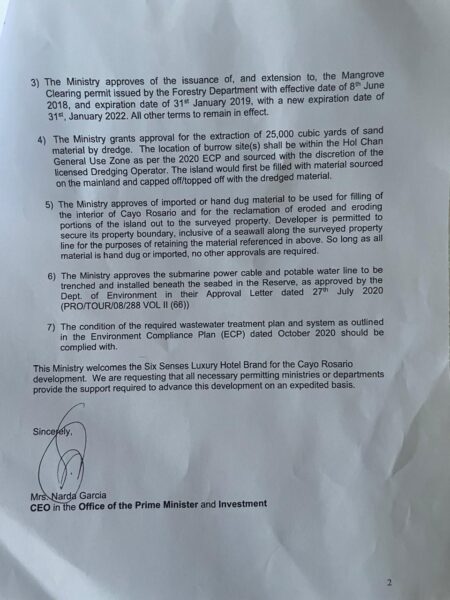By Dion Vansen
A mega-resort project is taking shape on the leeward side of Ambergris Caye. The waters surrounding the 10-acre Cayo Rosario rival the pristine coral reef environment of the windward side, long a magnet for scuba divers and snorkelers. With translucent waters and small mangrove cayes, the area was once a haven for migratory and resident bird species and remains a critical nesting and feeding habitat. It is also a popular destination for fly-fishing enthusiasts. The island lies about a 45-minute boat ride from San Pedro Town, depending on sea conditions.
According to a 2021 hotel industry article, international resort operator Six Senses Hotels Resorts Spas will manage the development under Six Senses Belize.
“Throughout, the emphasis has been placed on sensitive integration of landscaping to connect guests with nature and allow for greater privacy and coveted ‘desert island’ appeal,” Neil Jacobs, Chief Executive Officer of Six Senses, said in the article.
Today, with work on the Cayo Rosario Tourism Project underway, opposition is mounting. From residents to international environmental advocates, groups are united against the development within the Hol Chan Marine Reserve. Developers are reportedly still seeking investors for the multimillion-dollar project. After nearly a decade of planning, many islanders question whether Cayo Rosario will share the fate of other ambitious but unrealised developments.
Some say it’s the ‘wrong kind of investment’
John Turley and Daniel Kalenov, the American developers behind the project, unveiled their plans in late 2016. They proposed a 102-key luxury hotel with an island club, restaurant, dive shop, marina, and 90 over-the-water bungalows. The development also included 12 mangrove bungalows and 15 island villas for sale, with a projected capacity of 600 guests.
In April 2017, consultants representing the developers presented their Environmental Impact Assessment (EIA)—required under Belizean law—at the San Pedro Lions Den. The meeting was contentious. Island residents, tourism stakeholders, and environmentalists strongly objected to the 90 planned over-the-water bungalows. 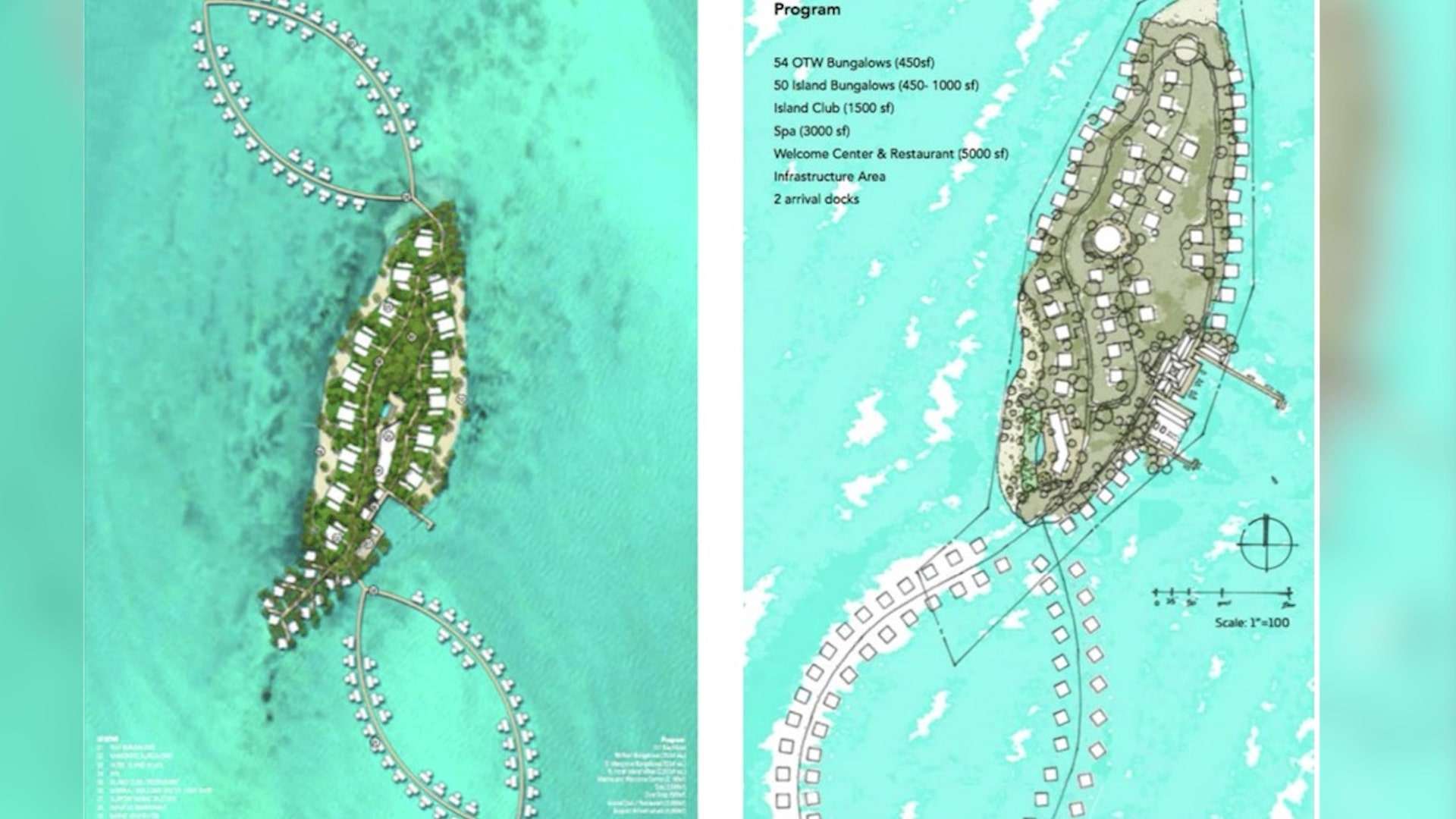
The developers’ team claimed the resort would create up to 300 jobs during peak season and generate about $26 million in tax revenue within its first five years.
At the meeting, Philip “Billy” Leslie, president of the San Pedro Tour Guide Association, rejected the over-the-water designs. “Stop disrespecting us with such ideas. You bought an island; build on your island,” he said. “We protect the flats for a reason!”
Other residents reminded the developers that under Belizean law, all land up to 66 feet from the high-water mark is national property, or “Queen’s Land,” which must remain accessible to the public. Longtime environmental advocate Jose “Elito” Arceo argued that occupying underwater areas without permission would be unlawful. “We are not against development, but we cannot agree with this type of project, which threatens our livelihood and our marine environment,” Arceo said. “You are not allowed to build over the water because that is not your land. Build on the island, which is your property.”
Fly-fishing guide and activist Alexander Gomez also criticised the proposal. “You are bringing the wrong type of investment to our country,” he said. “We do not need another Cancun or Tahiti, we have to work together to save what we have. What we have is unique.”
Neither Turley nor Kalenov attended the meeting, and no public response to the concerns was recorded. Turley had previously stated that minimising environmental impact was a priority. Few in attendance could have predicted that the Cayo Rosario controversy would still be alive in 2025.
Under scrutiny
Records and published reports show that Cayo Rosario first changed hands in 2008, when the Government of Belize transferred ownership to Canadian developer David Mitchell. A 2010 article in the Amandala newspaper reported that the government gave Mitchell the island in exchange for a small caye near Caye Caulker, which had been mistakenly sold to Mitchell and another party. As compensation, Mitchell received Cayo Rosario and other Ambergris Caye property. 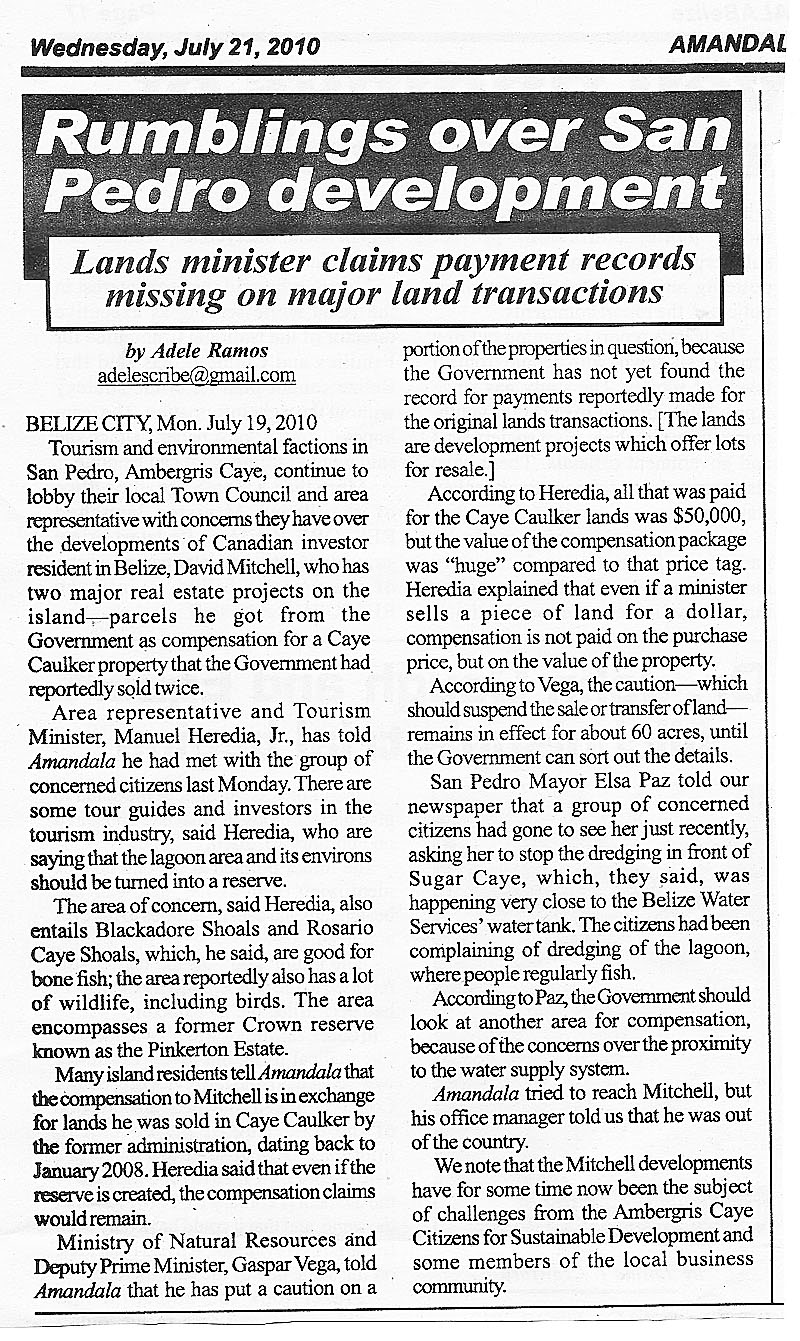
Between 2014 and 2015, ownership of Cayo Rosario shifted to American developers John Turley and Daniel Kalenov. The pair filed paperwork with the U.S. Securities and Exchange Commission (SEC), declaring their intention to sell securities in the development under the name Cayo Rosario LLC, registered in Buffalo, Wyoming.
Turley and Kalenov are also said to be partners in Global Diversified Partners, which their website describes as an “investment firm of choice for individuals seeking to diversify their portfolios into tangible assets, not just paper ones.”
Neither Turley nor Kalenov was available to interview for this story. In Belize, however, Turley has been the public face of the Cayo Rosario project. A well-known figure on Ambergris Caye, he is associated with the RE/MAX Real Estate Group and has brokered property deals across the island. Sources familiar with the project told The San Pedro Sun that potential investors have reportedly hesitated, making it challenging to raise sufficient capital. An interview request to RE/MAX seeking comment on Turley and the project went unanswered.
The developers also faced legal trouble in the United States. In September 2015, Colorado news outlets reported that Turley and Kalenov had been served with a cease-and-desist order for selling unregistered securities in that state. Through Global Diversified Partners, headquartered in California and registered in Wyoming, the pair allegedly raised funds for real estate projects and promoted opportunities in Belize at investor events in Denver. Colorado authorities said these activities violated the Colorado Securities Act.
While neither developer has spoken publicly about the project recently, Kalenov acknowledged receiving questions but offered no comment. Turley spoke with The San Pedro Sun in November 2016, as details of the resort plan began to emerge. “The investment team is looking to develop Cayo Rosario as environmentally feasible as possible. We have had biologists and scientists spend an extended time on the island conducting studies of the number and variety of birds and marine life in and around the island. It’s our goal to see the bird population on Cayo Rosario increase, not decrease. We are not looking at developing the entirety of the island; we would like to leave a lot of the island intact,” Turley said at the time.
He described the project as “a very high-end, low-density” development with minimal environmental impact. “That was the mindset that we had when we decided on Cayo Rosario,” he added.
The Incentives Loophole
In November 2021, Prime Minister Honourable Dr. John Briceño promoted the Belize Investment Summit on Ambergris Caye, saying the event would attract investors to the country. He emphasised that developers planning reckless projects were not welcome. Concerned islanders, particularly in the tourism industry, pointed to the Cayo Rosario project—by then well underway—as both reckless and unsustainable.
Their concerns reflect a broader issue: Belize is dotted with unfinished tourism projects that launched with fanfare but were later abandoned.
One example is the La Sirene project at the southern tip of Ambergris Caye. According to Condo Hotel Center, construction began in 2016 under developers Greg and Lucas Pisarczyk. Planned as a condo-hotel with eight buildings and 126 residences, the property was to feature Caribbean Sea views, a harbour, and a “lazy river.” It was expected to open in winter 2021. Instead, work halted before completion, and today its abandoned structures are among the first things visitors see when arriving in San Pedro by water. 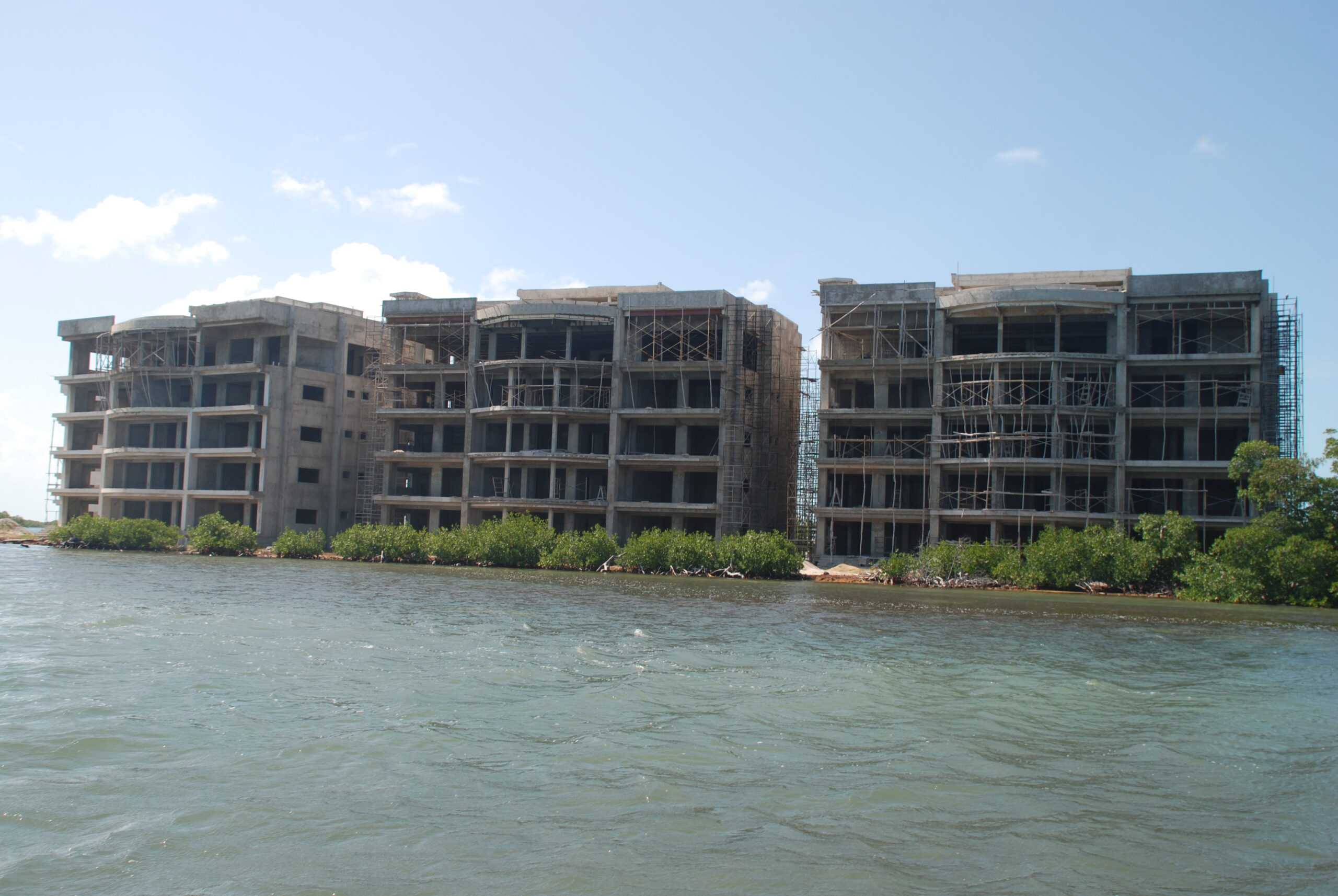
Although no official explanation has been given for its collapse around 2019, mismanagement is widely cited. A 2022 note on one local realtor’s website read: “Note: Not sure if this development is moving forward! Stay tuned!” Islanders warn that the deteriorating buildings pose risks to wildlife and the marine environment, as erosion threatens to topple the structures into the sea. However, a group of primarily Belizean investors recently acquired the stalled project. They now seek clearances to restart construction under a new name, pledging minimal environmental impact.
Placencia offers another cautionary tale. A massive project was supposed to include an international airport. Instead, visitors to the peninsula are greeted by a sprawling abandoned site. According to the U.S. Attorney’s Office for the Southern District of New York, developer Brent Borland and associates defrauded about 40 investors of $26.1 million, claiming the funds would finance the airport. Manhattan U.S. Attorney Audrey Strauss later said: “Using lies and deceit, Borland tricked more than 40 investors into entrusting him with their hard-earned money. In truth, Borland’s promises to investors were lies, and he spent much of their money on himself. For the financial and emotional devastation his fraud has inflicted, Borland will spend the next seven years in prison.”
Even Canadian developer David Mitchell, a former owner of Cayo Rosario, reportedly has a track record of ambitious but incomplete projects. He once promoted a deep-water marina and golf course as part of the Costa del Sol development on western Ambergris Caye. The plans never materialised. Another of his initiatives, the Sugar Caye development south of San Pedro, made headlines in June 2009 after mangroves were cleared to create a public subdivision of 421 lots near the island’s sewage treatment pond. Developers said the project would provide utilities and affordable housing. Several reports listed John Turley—now tied to Cayo Rosario—as the project’s sales manager. By 2014, Sugar Caye had been rebranded as Mahogany Bay Village, a high-end residential, tourism, and commercial community.
In response to questions about how the government vets large-scale tourism projects for financial soundness, Lincoln Blake Jr., director of the Investment Policy and Compliance Unit, explained that his office only reviews applications under two programs: Fiscal Incentives and Designated Processing Areas , which support export-oriented investment. “Cayo Rosario is not an applicant who has submitted for either incentive program,” Blake said via email, offering no further comment.
The Central Bank of Belize also declined to comment specifically on Cayo Rosario. In a statement, the bank noted that as the foreign exchange regulator, it ensures foreign-owned projects comply with the Exchange Control Regulations Act and anti–money laundering requirements. The Financial Intelligence Unit (FIU) confirmed it does not vet the financial backers of tourism projects. “The FIU is simply unable to provide any procedures utilised to screen or approve large tourism developments in Belize, as it does not fall within our purview,” said Phyllis Phillips Valerio on behalf of new FIU director Marlyn Gardiner-Usher.
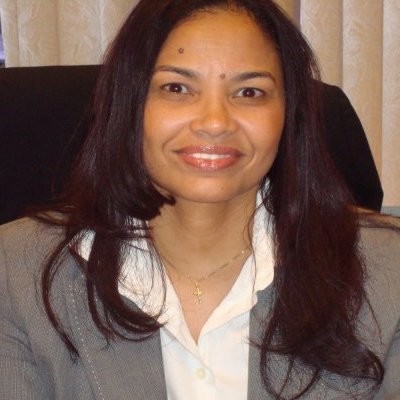
The National Investment Promotion Agency, BelizeINVEST, a unit of BELTRAIDE, is involved in facilitating eligible investment projects, including those seeking to pursue government incentives, namely the Fiscal Incentive or a Designated Processing Area incentive. BelizeINVEST manager Lianne Torres said that to ensure they attract and support viable and sustainable investments for Belize, there are established key requirements that all investors must meet to access the incentives offer by the Government of Belize. The requirements for applicants include:
• Proof of substantial capital and a source of funding
• Clearance from the Department of the Environment (DOE)
• Clearance from the Central Building Authority (CBA)
• Compliance with other key permitting and regulatory entities
“These rigorous requirements are fundamental to our mandate of fostering economic transformation through responsible investment, ensuring that projects contribute positively to Belize’s development and safeguarding the interests of all stakeholders,” Torres said.
Because Cayo Rosario LLC has not applied for government incentives, it may fall outside this regulatory framework, although the project has obtained approvals/permits from DOE and the CBA. The apparent lack of a centralised authority to vet and monitor foreign investors who are not seeking incentives creates a loophole and leaves room for weak oversight.
On September 4, 2025, during the Belize Investment Summit on Ambergris Caye, Prime Minister Briceño acknowledged the need for stronger monitoring. He said the government had investigated a complaint of dredging at Cayo Rosario’s Six Senses project and found it false but noted the incident highlighted gaps in oversight. “We found out it was not true. However, what we did is to ensure now that there has to be a task force and that these projects are monitored on a regular basis and not only when there are complaints. But we have to do better, and do the proper monitoring, so when there are complaints, we can inform people what is really happening,” he said.
No further details were provided about an active task force.
Inside the EIA
George Myvette and Alfonso Avilez conducted the Cayo Rosario Environmental Impact Assessment (EIA), then representing the Tunich-Nah Consultancy Agency. At the contentious April 2017 meeting in San Pedro, Myvette claimed that the waters around the tiny island were neither pristine nor biologically diverse, noting “only” nine fish species in the area.
Tour guides and local fishers countered that Cayo Rosario’s waters are vital fly-fishing flats, providing livelihoods for many islanders. Myvette acknowledged that one of the project’s significant impacts would be the removal of vegetation. “However, we have recommended retaining at least 25% of all vegetation on the island, including littoral forest and mangroves,” he said. “The solution here will be the introduction of a landscaping design that replants native plant species to provide habitat for birds living on the island.” Myvette also claimed the over-the-water structures would attract marine life but offered no evidence to support this.
Avilez addressed the engineering aspects, noting that the development would have its own power and water sources. He described plans for a submarine pipeline from Ambergris Bay subdivision on Ambergris Caye to supply power, water, and communication to Cayo Rosario. “There will be three cables with pipes connecting the island with the mainland of Ambergris Caye. Two of those lines will bring in potable water, and one will deliver communication and electricity,” he said. 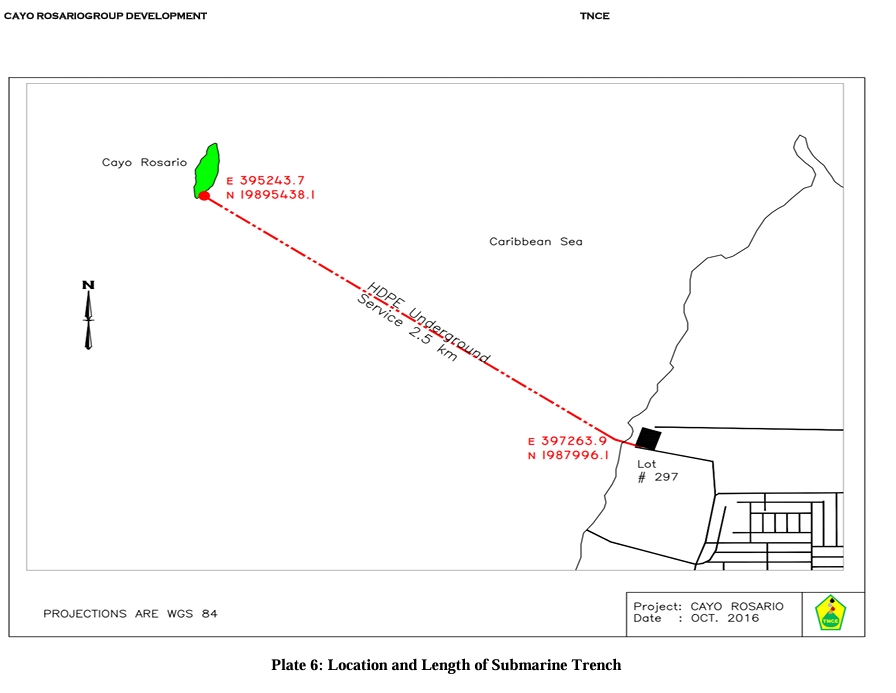
Water would be sourced from the sea and treated via reverse osmosis, while wastewater would be recycled for irrigation. About 10% of the resort’s total waste output would be transported to the mainland. 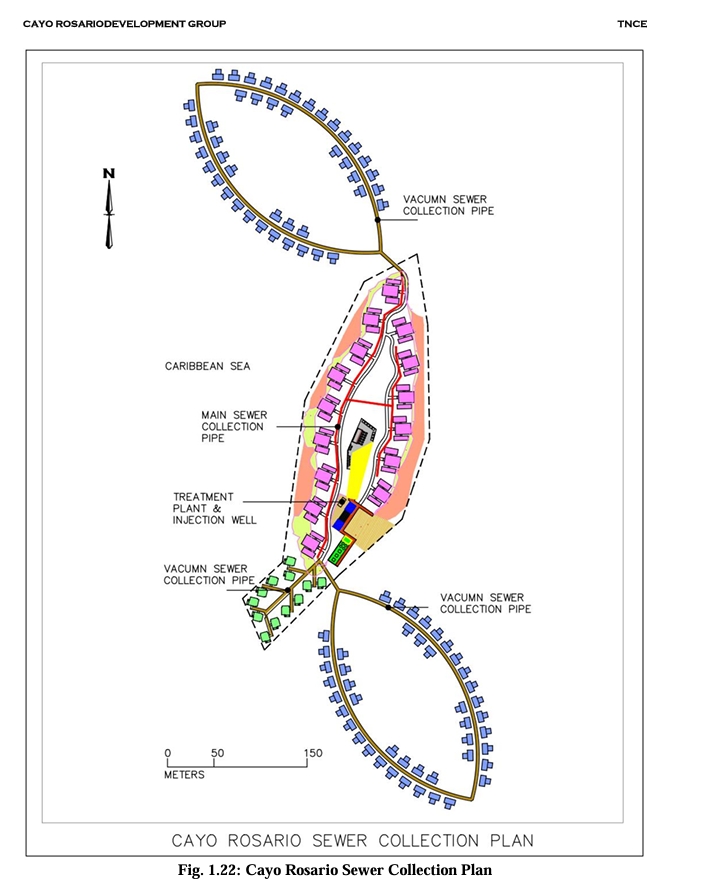
The developers were required to scale down the project following the first public consultation. The October 2017 “Cayo Rosario Development Project Supplemental Information” report reduced the over-the-water bungalows from 90 to 54. Other features included 50 island bungalows, a restaurant, a spa, and a welcome center. The project would require filling 5.21 acres of the island, likely with sand or white marl, leaving 3.81 acres in its natural state, and creating 1.18 acres of new beach. 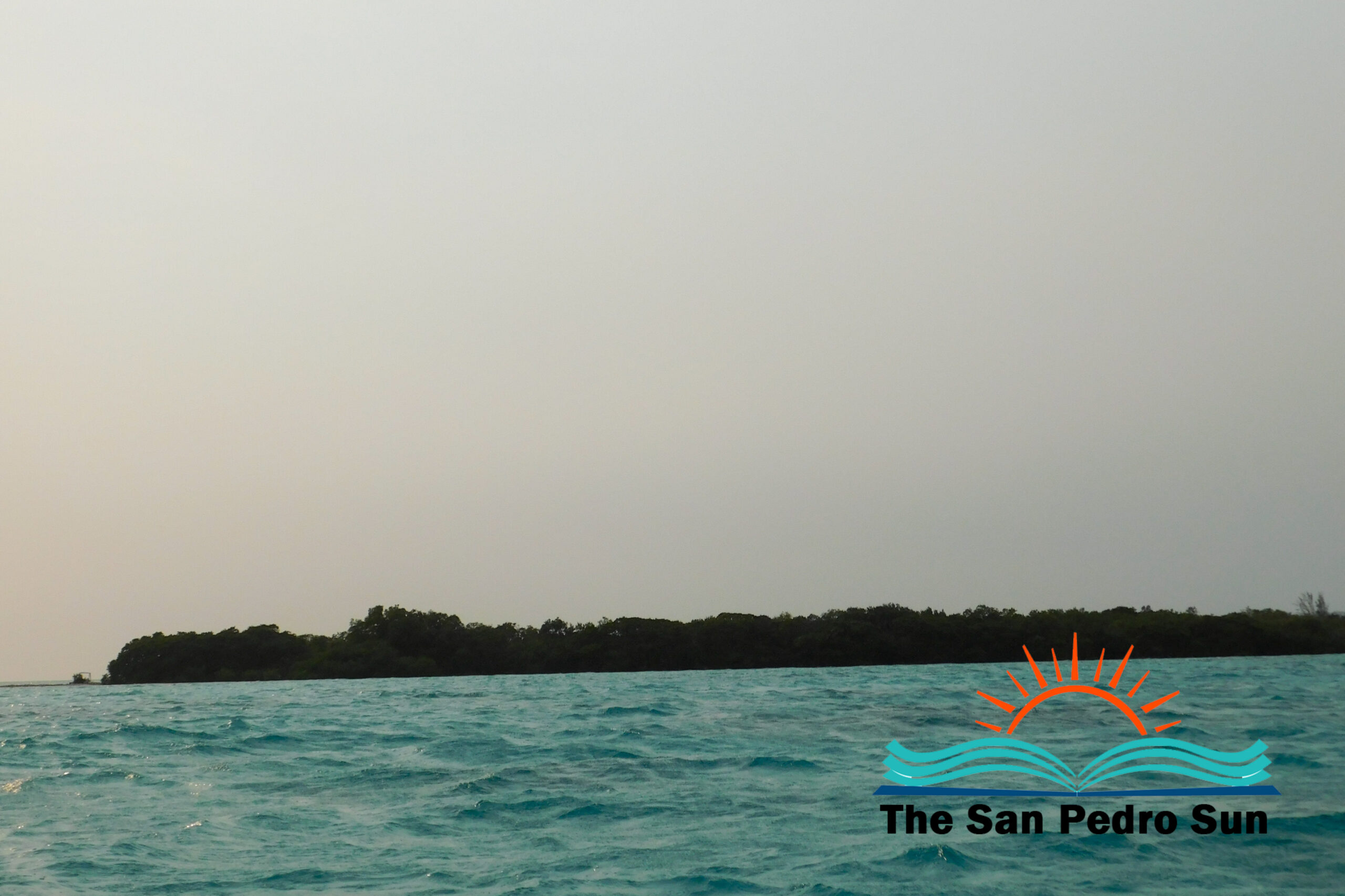
By October 2020, the Department of the Environment (DOE) issued the Environmental Compliance Plan (ECP), reducing the project to 40 overwater bungalows and fewer island structures. The ECP, signed by Kalenov, allowed the reclamation of eroded portions of the island and limited dredging to 62,000 cubic yards outside the conservation zone.
On June 10, 2021, the Office of the Prime Minister and the Ministry of Finance, Economic Development, and Investment sent a letter to Kalenov expressing full support for the project. The letter, signed by CEO Narda Garcia, approved the September 2020 site plan, including overwater structures, sand extraction, mangrove clearing, and submarine power and water line installation.
Despite reductions, overwater structures remain unpopular. In May 2024, fly-fishers protested peacefully after seeing heavy equipment near Cayo Rosario, warning that construction threatened bonefish, permit, and tarpon populations—species vital to Belize’s tourism economy. Tour guide Michael Peralta said, “Sometimes, we must go further to look for this fish. We need to protect this industry, our environment, and our livelihoods.”
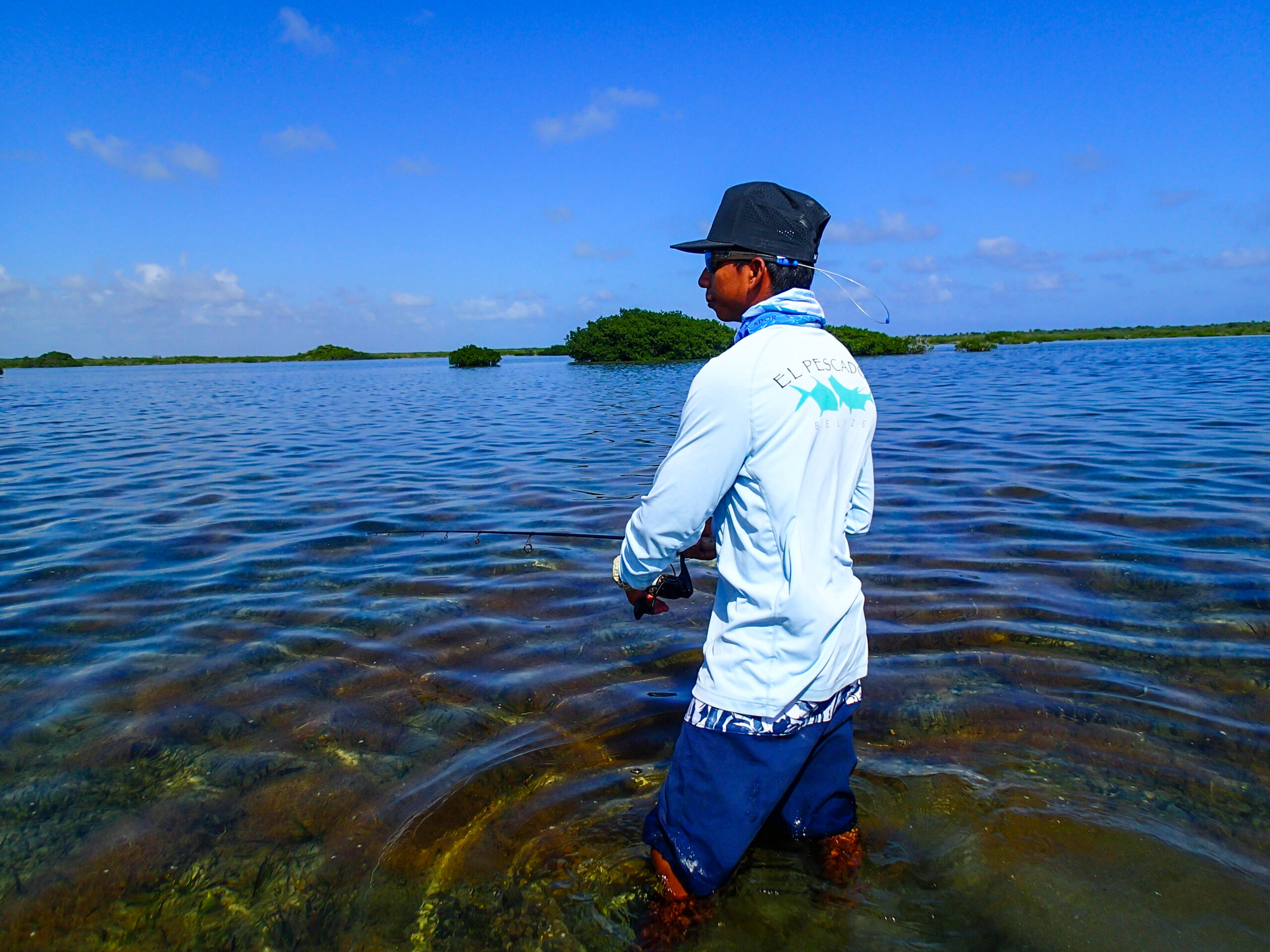
Roberto Canul, chairman of the San Pedro Tour Operators Association, criticised the overwater bungalows: “They are building a demo building to show future buyers. There are 40 that will go up for sale. Where are they being built? Over the waters. If you need to develop your property, it must not affect the livelihood of others.”
Former Hol Chan Marine Reserve head Miguel Alamilla questioned the EIA’s methodology: “We need to scrutinise EIAs in greater detail. Researchers should combine onsite biological research with social, local, and traditional knowledge.” 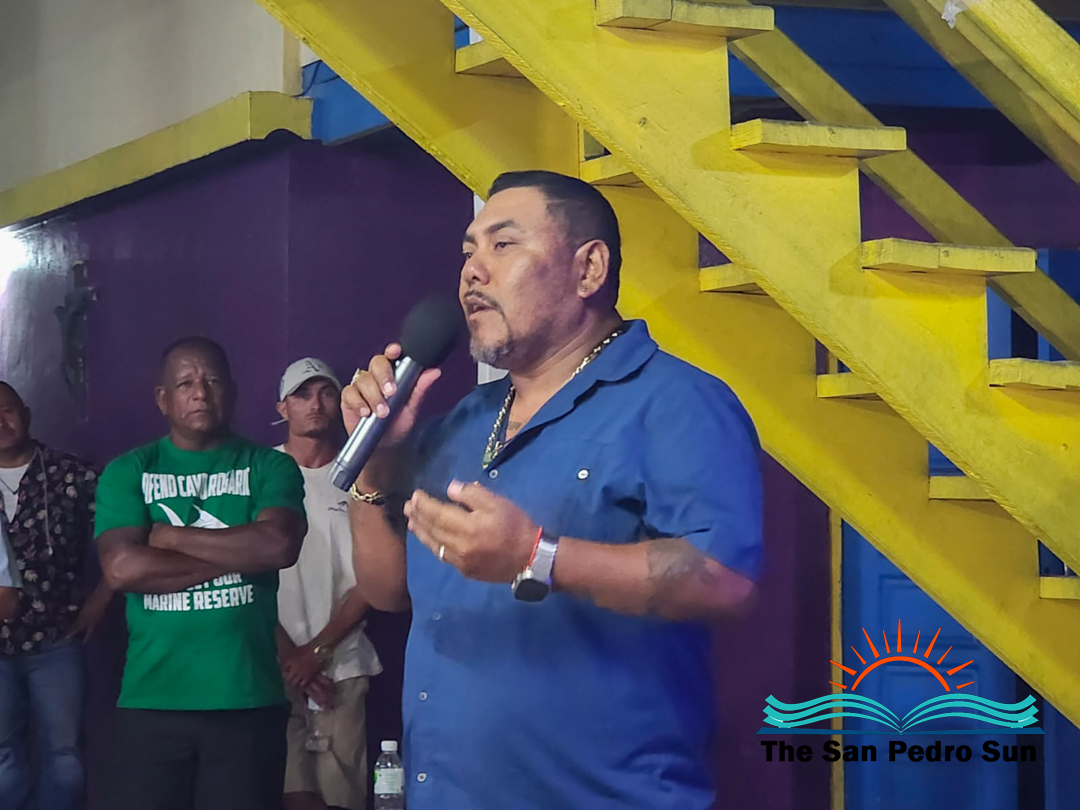
In March 2025, tour operators and guides staged another protest after observing a barge and heavy machinery at the site. One guide, speaking anonymously, said: “We want to make sure they are not allowed to dredge the seabed because it will affect marine life and us. This is part of the marine reserve.”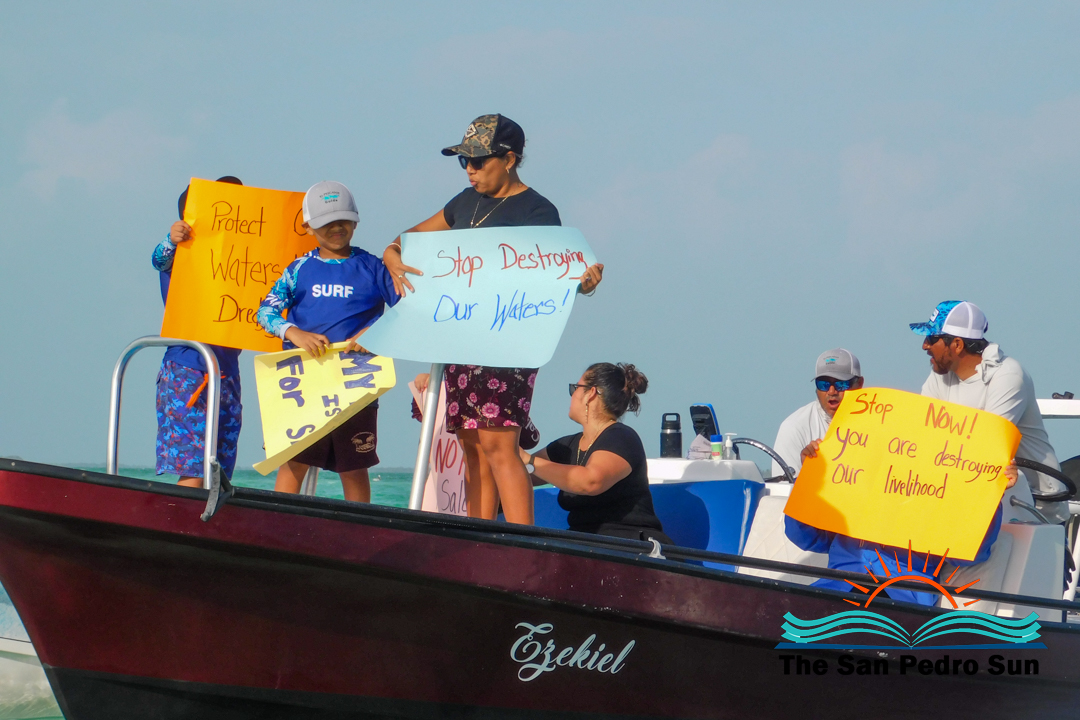
On April 8, 2025, a public meeting at the San Pedro Lions Den drew tour operators, guides, tourism stakeholders, and community members. DOE representatives and Area Representative Andre Perez, Minister of the Blue Economy and Marine Conservation, did not attend. The gathering focused on overwater structures, potential dredging, and mangrove destruction threatening the Hol Chan Marine Reserve.
Tour guide Oscar Iboy said, “These unsustainable developments will destroy our islands. They continue cutting our mangroves, filling lagoons, and our barrier reef could die within ten years if not properly monitored.”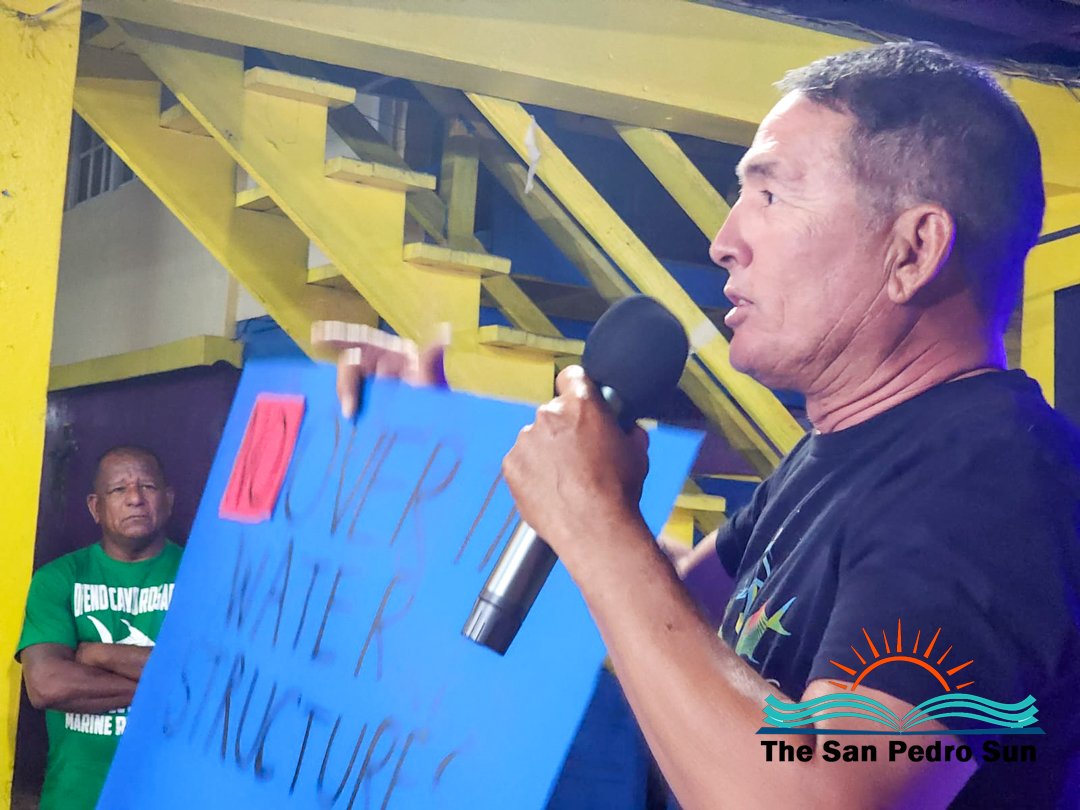
DOE Chief Environmental Officer Anthony Mai said the developers met all requirements, and the ECP governs onsite activities. Regarding seabed ownership, Mai explained: “No one can own the seabed. A seabed use permit from the Lands Department, renewed annually, is required for piers and marinas.”
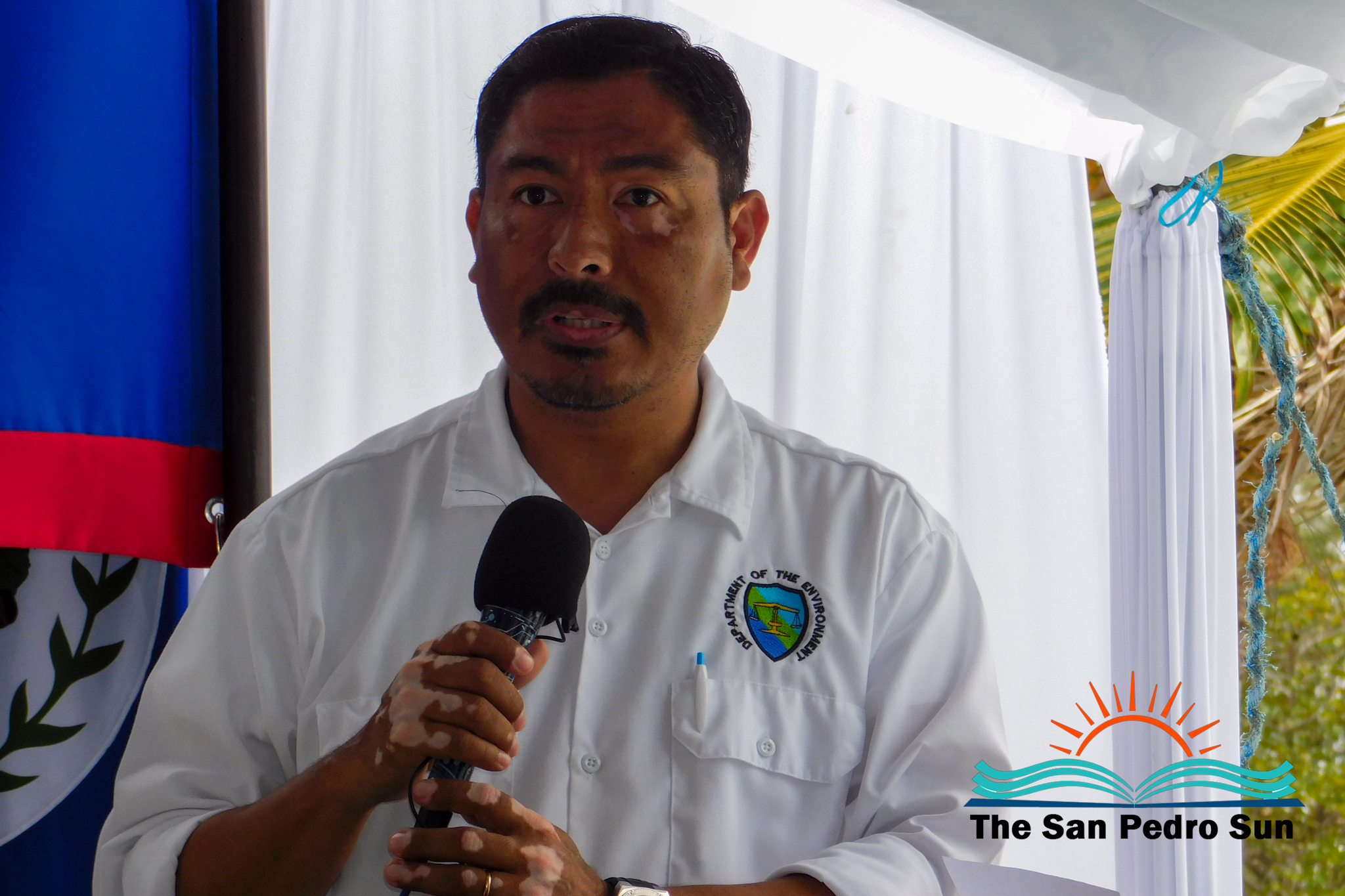
Fisheries expert Addiel Perez of the Belize Bonefish and Tarpon Trust criticised the EIA: “The EIA claimed there were no fish and no ecological impact. Our study shows mangroves, coral reefs, and seagrass are critical. We assessed environmental, social, and economic importance with guides, volunteers, and scientists.” 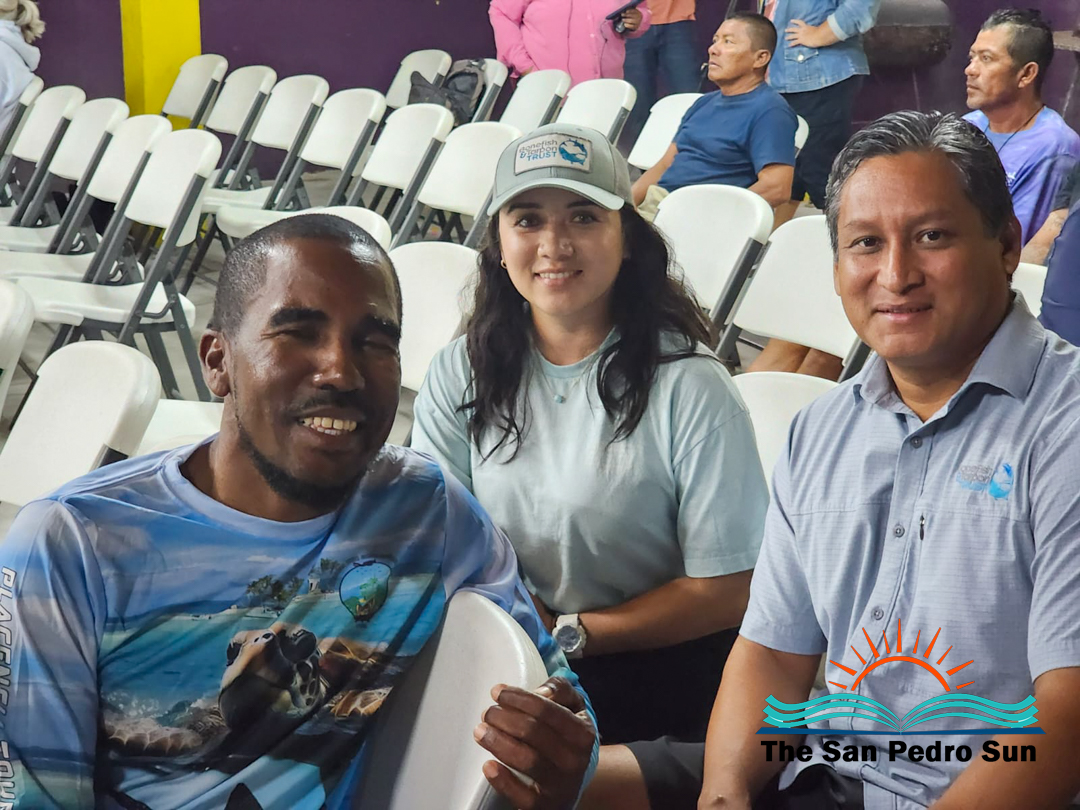
Opposition extends nationally. Eworth Garbutt, President of the Belize Flats Fishery Association, said: “Without healthy flats, there can be no flats fishing, threatening our ecosystem. Building in marine reserve waters should not be permitted.” 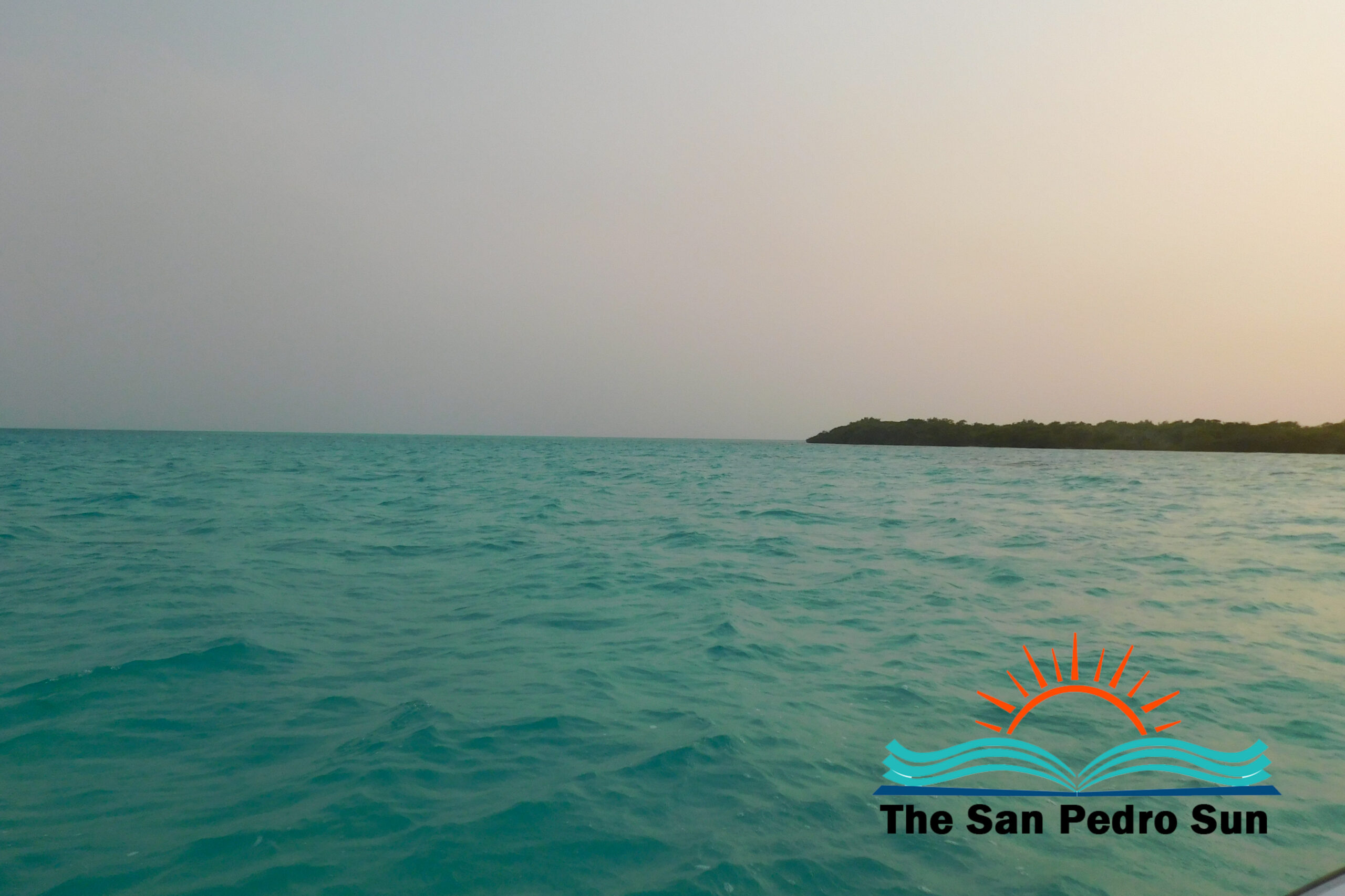
Days later, the Central Building Authority (CBA) issued a stop order after several structures, and a pier were built without permits. The order remained until June, when Cayo Rosario representatives obtained all necessary CBA permits and confirmed compliance with the DOE-approved ECP. No fines were levied, but the CBA warned that failure to comply would result in judicial action. Central Building Authority Stop Order
A ‘Very Careful’ Approach from Leaders
Past and current Area Representatives for Belize Rural South, including Ambergris Caye and Caye Caulker, have supported conservation advocates while maintaining a hands-off stance. They emphasise that their influence is limited due to Cayo Rosario’s private ownership and the environmental approvals that were already granted before their involvement.
Andre Perez, the current Area Representative and Minister of Blue Economy and Marine Conservation, acknowledged the concerns of fly-fishing guides. “The issue of Cayo Rosario in the very beginning should never have occurred, but it did. And it changed hands, sold. So, a lot of people made money before it got to us. That’s when it was sold for land compensation,” Perez said, referring to the Mitchell arrangement. “Then the next government continued, when it could have stopped.” He added that buyers of property in a marine environment should be aware of the requirements and guidelines for developing such property.
Perez stressed that since Turley and Kalenov hold legal title to Cayo Rosario and the project is compliant with current regulations, the government needs to take a “very careful” approach in this case.
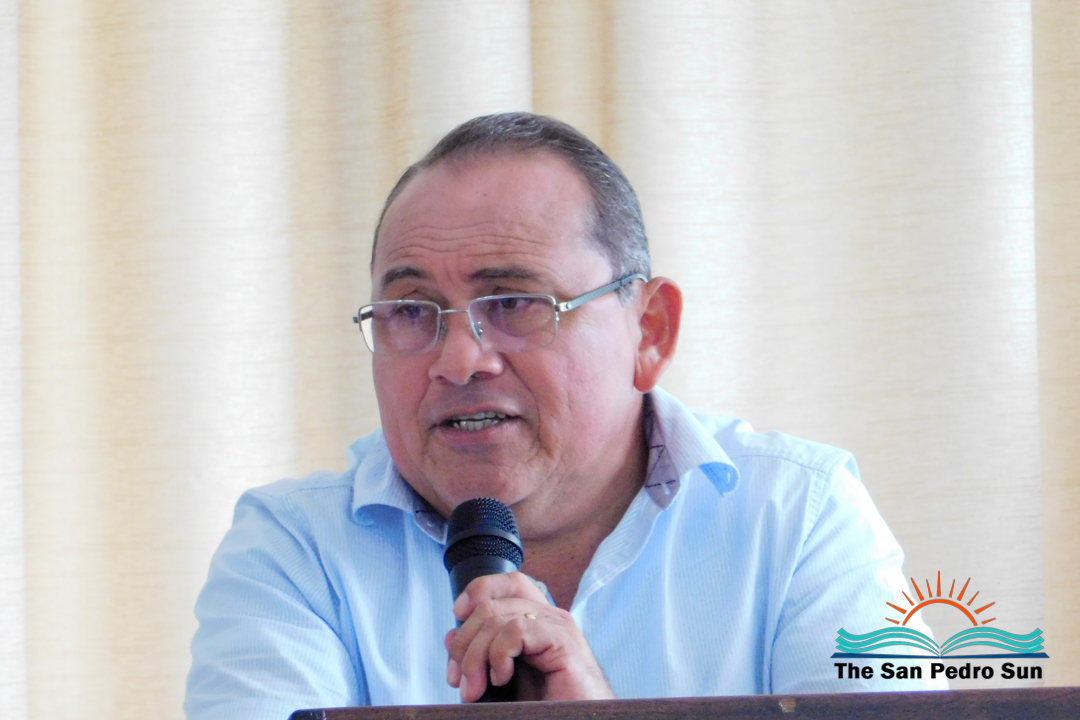
San Pedro Mayor Gualberto “Wally” Nuñez echoed support for the conservation advocates and tour guides but noted the limitations of his office. “I have voiced that I am not in support of the project,” Nuñez said. “But it is not within our jurisdiction to stop it.” He added that oversight falls primarily to the Belize government and the Hol Chan Marine Reserve management. The reserve’s caretakers stated that, for now, their role is to monitor the development progress.
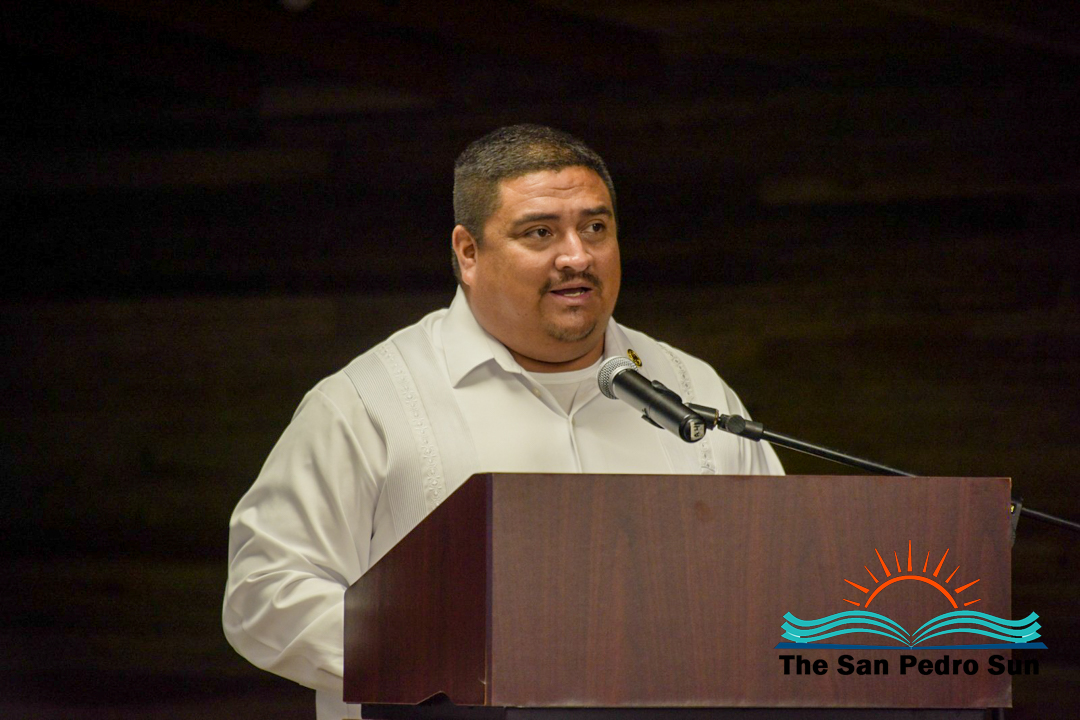
After the CBA stop order was lifted in June, the developers announced that construction of the overwater bungalows would proceed. Mariners were advised to exercise caution near the construction zone, which is marked with warning lights at night and in low-visibility conditions. The developers also notified the public that construction equipment, including barges, would be near the island.
At the time of writing, however, no major construction had commenced. Developers have reportedly made modifications to minimise environmental impact. These changes aim to make the resort eco-friendlier and support the birding population beginning to inhabit the island. 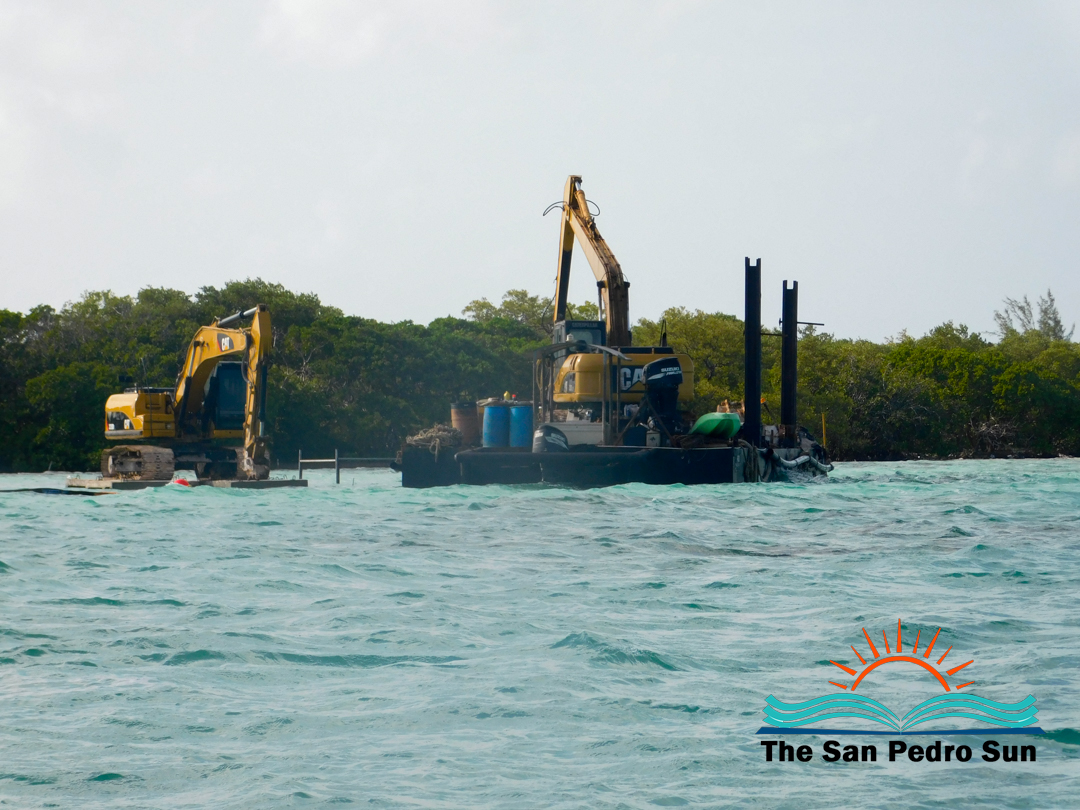
‘More Magical Than You Can Imagine’
The Cayo Rosario project is now slated to open in December 2027, despite a 2021 article on Hotel News Resource quoting Six Senses Hotels Resorts Spas expecting a mid-2025 opening—a date that has long passed.
In that same article, developer Daniel Kalenov described the project: “Welcome to Six Senses Belize, a world more magical than you could imagine. You’ll be struck by the stunning 81-degree turquoise water, the laid-back vibe, and genuine smiles that greet you off the plane…. This project is unlike anything you’ve ever experienced, and it’s right on your doorstep.”
As of August 2025, Six Senses’ online “Openings” page does not list Cayo Rosario among its upcoming projects. The development, however, remains listed under the Americas section for Belize. On September 10, 2025, the brand’s parent company, IHG, responded to The San Pedro Sun’s inquiry. Drew Baker, Specialist of Corporate Communications for the Americas, said: “We are still working with ownership on this project and providing support through the design process. Hotel opening dates constantly change throughout construction, but the owner is planning for a late 2027 opening.” Baker added that no further details could be shared at this time.
Nearly a decade after submitting their initial Environmental Impact Assessment (EIA) and unveiling their plans publicly, Turley and Kalenov’s project has only just begun to take shape. In the meantime, the Ambergris Caye Citizens for Sustainable Development continue raising awareness about the project’s potential environmental impact on the flats and the barrier reef.
The group is planning a GoFundMe campaign to fund a marketing effort highlighting the ecological effects of Cayo Rosario and similar developments. They also seek legal representation to challenge the developers, citing government inaction in regulating large-scale tourism projects. “This will not stop here. We will not stand by while our marine reserves and national resources are sacrificed for unchecked private interests and short-term gain,” the group said in a joint statement.
This reporting project was made possible through the support of Global Financial Integrity, a Washington, D.C.-based think tank focused on illicit financial flows, corruption, illicit trade, and money laundering, and was facilitated by the Belize Network of NGOs. The views and opinions expressed in this article are those of the author and do not necessarily reflect those of the supporting organizations or their partners.

